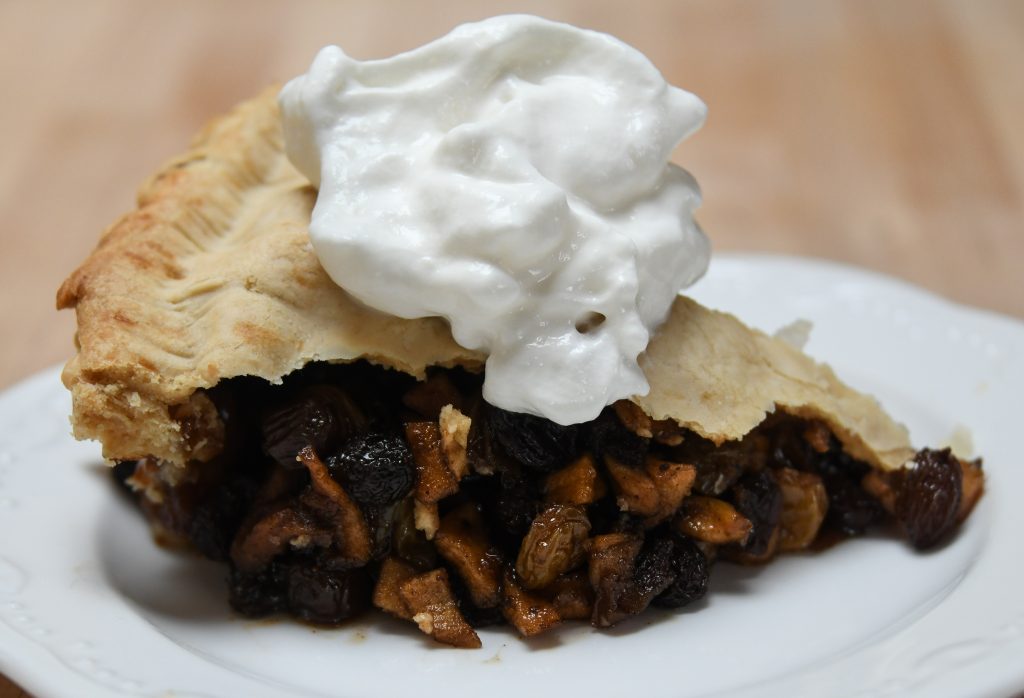
Until my late 20s, I was a seasonal binger of mince pies. Every November the warm scents of nutmeg, cinnamon, cloves and allspice would fill my parents’ kitchen, reminding me that mince pie time had arrived. My mother, who generally despised cooking, had a longstanding tradition of baking this British treat at Thanksgiving and Christmas. Like her annual walnut stollen, this pie was something that she both enjoyed and excelled at making. Also like her stollen, it’s a baked good with which I’ve tinkered, updating it for the 21st century.
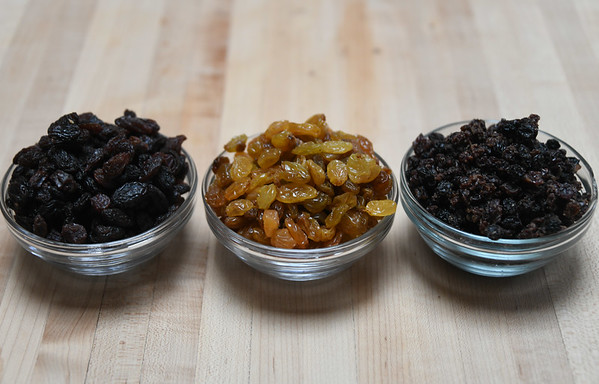
History of mince pie
In England mince or mincemeat pie, as my mother and scores of others called it, is a Christmas speciality. Featuring a mixture of chopped apples, raisins, sultanas, currants, spices, lemon juice and brandy, this pie is moist, aromatic and filling. Historically, its heartiness came, in part, from the presence of minced beef or liver. Hence the name “mincemeat.” By the 19th century the meat had been replaced by the hard fat known as suet. This gave the pie a rich flavor but without the taste of meat. Although my mother included suet in her mince pie, I do not.
Early mince pies were shaped like little boats. Today, in the UK, they usually are round, miniature, single-serving pies. Americans make them big enough to serve a crowd or at least six to eight people. If I’m pressed for time, I take the North American approach and plunk everything into a 9-inch pie pan. Otherwise, I make mini pies.
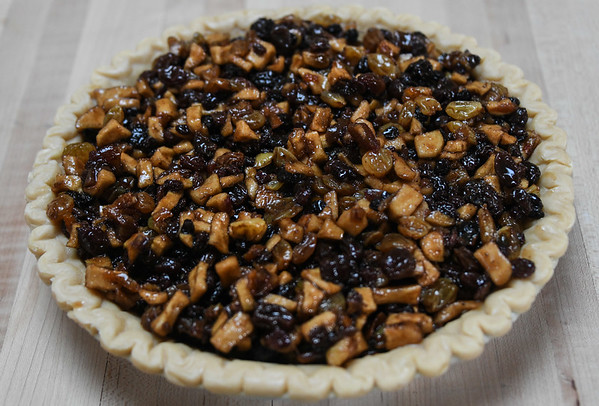
Making mince
Usually, mince is made weeks in advance. The fresh and dried fruits, spices, optional suet, brown sugar, brandy and fruit juices are stirred together and then spooned into jars. There the ingredients sit, marinating in their own juices, until it’s pie baking time.
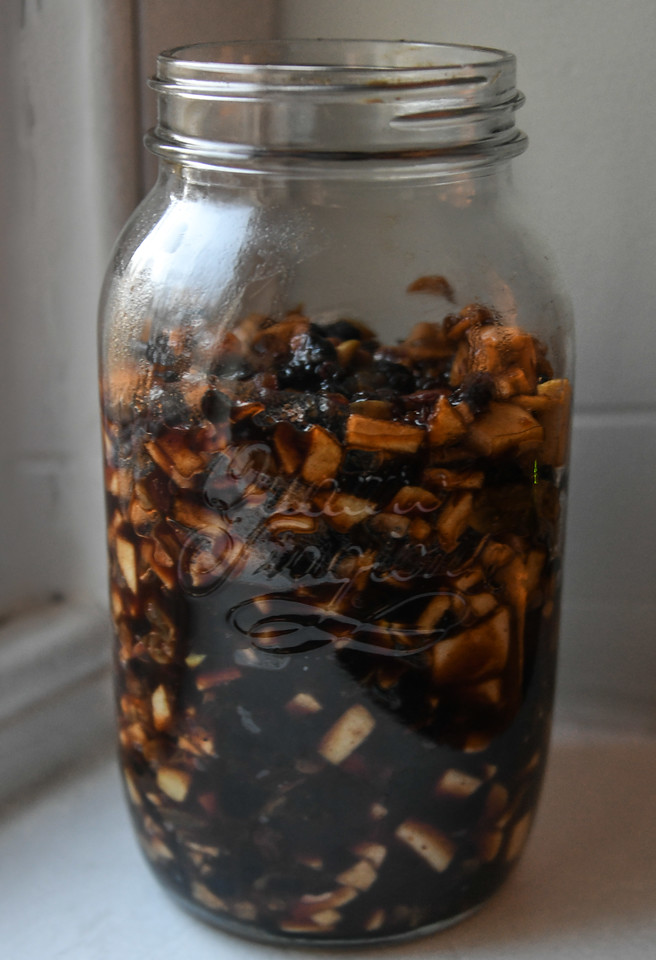
If you decide at the last minute that you want to bake a mince pie and you don’t have a jar of mince on hand, don’t panic. To skip the long maceration time, put everything in a saucepan and bring the ingredients to a simmer over low heat. Allow the ingredients to bubble away until most, if not all, of the liquid has been absorbed. Let the mince cool to room temperature and, with that, you have a delicious mince pie filling.
Mince Pie Like Mom Didn’t Make
You can make this pie using the nutty crust from my earlier Cranberry Torte recipe, your own shortcrust recipe or two 9-inch deep-dish, store-bought crusts.
Serves 8
Ingredients
1/4 cups pitted dates, chopped
1 cup raisins
1 cup golden raisins (sultanas)
1 cup currants
2 pounds Granny Smith apples, peeled and diced
Juice and grated zest of 1 lemon
1-inch piece of ginger, peeled and grated
1/2 teaspoon ground cinnamon
1/2 teaspoon allspice
1/2 teaspoon ground cloves
1/4 teaspoon ground nutmeg
1/3 cup orange marmalade
1/2 cup dark brown (muscovado) sugar
2 tablespoons cognac
2 9-inch deep dish pie crusts
Place the dates, raisins, sultanas, currants, apples, lemon juice and zest, grated ginger, cinnamon, allspice, cloves, nutmeg, marmalade, sugar and cognac in a large saucepan. Bring the ingredients to a simmer over medium-low heat. Allow the ingredients to cook for 10 to 15 minutes or until all the liquid has been dissolved.
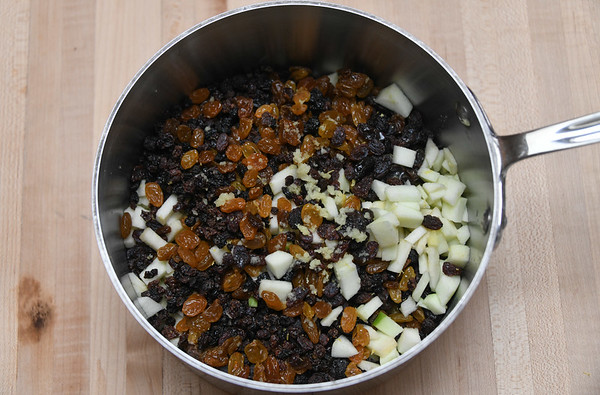
Preheat the oven to 425 degrees Fahrenheit.
Line a 9-inch pie pan with one pie crust round. Evenly spread the mince over the pie crust. Smooth out the top and then place the remaining crust over the ingredients.
Using your fingers, seal the edges of the crusts together. With either a fork or sharp knife, prick the top of the crust.
Place the pie in the preheated oven and bake for 10 minutes at 425 degrees. Lower the temperature to 350 degrees Fahrenheit and bake for an additional 35 to 45 minutes or until the crust is golden and flaky. Remove the pie and completely cool on a wire rack. Serve with homemade whipped cream or vanilla ice cream.
1 Comment